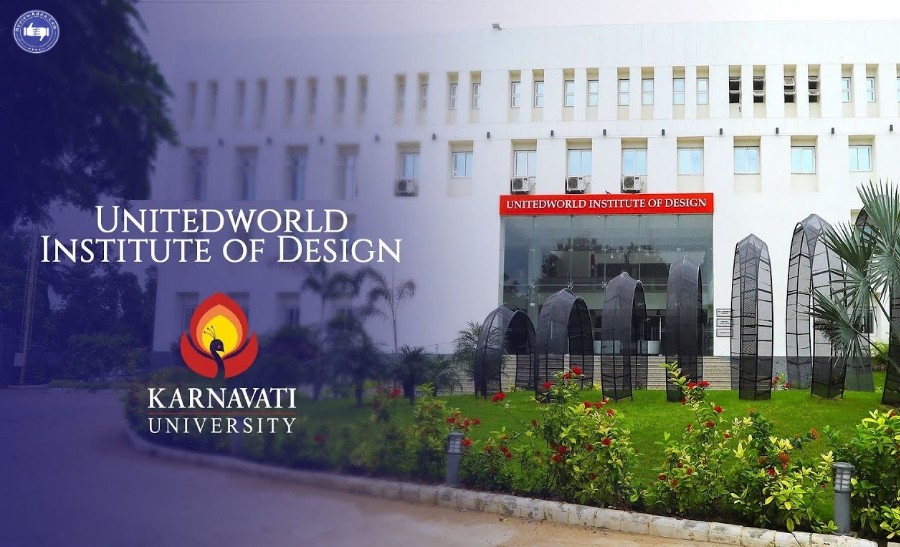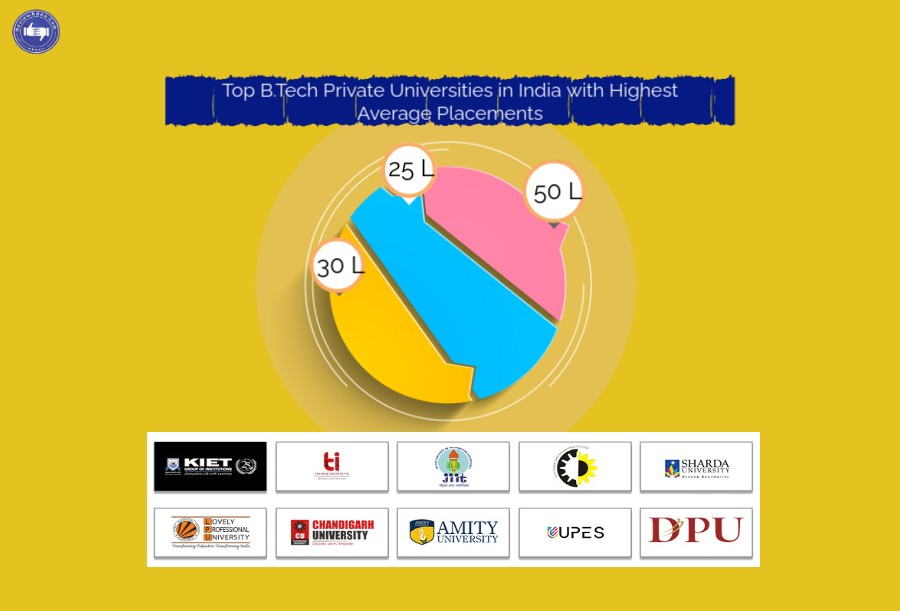Integrated Degree vs Dual Degree vs Normal Degree
The options for pursuing higher education have expanded in today's environment of fast evolution. Students now have the opportunity to investigate integrated and dual degree programmes in addition to the regular or "normal" degree programmes. These alternative pathways offer unique benefits and considerations for those seeking a comprehensive education.
We will examine the distinctions between integrated degrees, dual degrees, and regular degrees in this post to assist you in choosing the path that best suits your academic and professional objectives.
1. Understanding Integrated Degree
An educational programme known as an integrated degree combines undergraduate and graduate coursework into a single course. It normally lasts four to five years and smoothly combines courses from undergraduate and graduate programmes. The goal is to provide students a more comprehensive and in-depth grasp of the subject matter they have chosen to study.
With integrated degree programmes, students may frequently transition without any trouble from their undergraduate studies to a focused postgraduate programme without having to submit separate applications.
Benefits of an integrated degree
Integrated degree programs offer several advantages to students. Firstly, they allow for a more focused and efficient educational journey. By merging undergraduate and postgraduate coursework, students can delve deeper into their subject area, build advanced skills, and explore specialized areas of study without the interruption of transitioning between degrees.
Secondly, integrated degrees can enhance employability. Graduates from these programmes frequently have a more diverse skill set and specialised knowledge, which makes them desirable candidates for businesses looking for professionals with a variety of skills. Additionally, industrial internships, research projects, or work placements are frequently included in integrated degree programmes, offering networking possibilities in addition to significant hands-on experience.
Integrated degree programs offer several advantages for students:
- Advanced Knowledge and Skills: Integrated degrees provide students a thorough understanding of many different fields, enabling them to gain a variety of information and abilities. This multidisciplinary approach creates a comprehensive grasp of complicated situations while improving their problem-solving skills.
- Time and Cost Efficiency: Integrated degrees help students save time and money by merging undergraduate and graduate courses into a single programme. Students can earn two degrees in a shorter time frame compared to pursuing them separately, thus reducing the overall cost of education.
- Enhanced Employability: Holders with integrated degrees frequently have a rare combination of abilities, which makes them very desirable to companies. Their capacity to straddle many sectors helps them to successfully adjust to a variety of work contexts and take on challenging situations.
Drawbacks of Integrated Degree
While integrated degrees offer numerous benefits, they also come with certain drawbacks:
- Limited Flexibility: Integrated degree programs generally have a structured curriculum, leaving little room for elective courses or exploration of other subjects. This limited flexibility may not suit students who wish to pursue a more personalized academic path.
- Higher Workload: The comprehensive nature of integrated degrees often results in a higher workload compared to normal degree programs. Students need to manage multiple subjects simultaneously, which can be demanding and require efficient time management skills.
- Limited Exploration of Other Subjects: Integrated degree programs focus primarily on the chosen disciplines, which may restrict students from exploring other fields of interest. This limitation can be a disadvantage for those who desire a broader educational experience.
Examples of integrated degree programs
Several fields of study offer integrated degree programs. For instance, combined Bachelor of Medicine and Bachelor of Surgery (MBBS) programmes that combine undergraduate and medical courses exist in the area of medicine. Similar to this, integrated engineering programmes combine postgraduate study with undergraduate engineering degrees to provide students a thorough knowledge of engineering concepts and procedures.
2. Exploring Dual Degree Programs
As the name implies, dual degree programmes combine the pursuit of two distinct degrees. These programmes are intended to help students develop competence in two different subject areas. Dual degree programs can be completed in a shorter duration compared to pursuing the degrees individually, thanks to credit transfers and streamlined curriculum structures.
Advantages and challenges of pursuing a dual degree
One of the primary benefits of earning a dual degree is the chance to diversify your skill set and increase your knowledge of several academic fields. This may boost your adaptability in a job market that is continually changing and offer doors to a larger variety of employment opportunities.
However, pursuing a dual degree can also present challenges. Balancing coursework from two different disciplines can be demanding and require excellent time management and organizational skills. In addition, given the longer time of study, the cost of a dual degree programme could be greater than that of a single degree programme.
Dual degree programs offer several advantages for students:
- Diversified Knowledge and Skills: Students who enroll in dual degree programmes have the chance to learn information and skills in two different fields of study. They become more adaptable and have a larger skill set as a result of this diversification, making them professionals who can work in a variety of fields.
- Expanded Career Opportunities: By obtaining expertise in multiple fields, dual degree holders gain a competitive edge in the job market. They can pursue careers that require a combination of skills or find employment opportunities in industries that value interdisciplinary knowledge.
- Personal and Professional Growth: Dual degree programs foster personal and professional growth by exposing students to different academic environments, teaching methods, and perspectives. This exposure promotes intellectual agility, adaptability, and critical thinking.
Drawbacks of Dual Degree
Despite the benefits, dual degree programs have some drawbacks:
- Longer Duration of Study: Dual degree programs typically require more time to complete than traditional degree programs. Students need to balance the workload of two separate curricula, which may extend their time in academia.
- Increased Financial Burden: Pursuing two degrees simultaneously often incurs higher costs compared to a single degree. Students need to consider the financial implications and plan accordingly to manage the expenses associated with dual degree programs.
- Balancing Multiple Curricula: Juggling the requirements of two separate degree programs can be challenging. Students must effectively manage their time and prioritize tasks to succeed in both areas of study.
Examples of popular dual degree combinations
Dual degree combinations vary depending on the institution and the programs offered. Combining a Bachelor of Business Administration (BBA) with a Bachelor of Laws (LLB) is an example of a common combination that prepares graduates for jobs in both business and law. A common combination that combines technical and creative talents is a Bachelor of Science (BSc) in Computer Science and a Bachelor of Arts (BA) in Graphic Design.
3. Traditional or Normal Degree Programs
Traditional or normal degree programs refer to the standalone undergraduate or postgraduate programs offered by universities and colleges. These programs follow a linear educational path, with students completing their undergraduate studies before pursuing postgraduate qualifications, if desired.
Overview of a Normal degree
Normal degree programs provide a solid foundation in a specific subject area. They frequently have a broad variety of subjects relating to the discipline being studied covered in them. Ordinarily, undergraduate degrees may be earned in three to four years and postgraduate degrees in one to two years.
Benefits of a normal degree
The freedom that a regular degree provides is one benefit. Numerous programmes are available, allowing students to select one that best suits their interests. Due to the shorter length of study compared to integrated or dual degree programmes, normal degrees also tend to be more cheap.
However, one potential drawback of normal degree programs is the lack of specialized knowledge that integrated and dual degree programs provide. Graduates may need to pursue further education or gain practical experience to develop expertise in specific areas.
- Specialized Expertise: A typical degree provides a concentrated education in a particular discipline, enabling students to gain in-depth knowledge and skill in the subject of their choice.
- In-depth Understanding: Students can get a thorough grasp of the subject matter by focusing on one discipline and delving further into the theoretical underpinnings and practical applications of that area.
- Career Alignment: A normal degree provides a direct path to careers that require specialized knowledge. Graduates often possess the skills and qualifications needed to pursue profession-specific opportunities.
- Networking Opportunities: Traditional degree programs often offer networking opportunities with professors, industry professionals, and fellow students who share similar career interests. These connections can be valuable for future collaborations and job prospects.
- Streamlined Curriculum: Normal degrees typically have structured curricula designed to provide a cohesive educational experience. This ensures that students acquire the necessary foundational knowledge and skills required in their field.
Drawbacks of a Normal Degree
- Limited Scope: Pursuing a normal degree means focusing solely on one discipline, which may limit exposure to broader interdisciplinary perspectives and potential career paths outside the chosen field.
- Reduced Flexibility: The structured curriculum of a normal degree program leaves limited room for elective courses or exploration of other subjects. This lack of flexibility may restrict students who desire a more diverse educational experience.
- Skills Gap: Depending solely on a normal degree might result in a narrower skill set compared to integrated or dual degree programs. Graduates may lack the interdisciplinary skills needed to tackle complex challenges that span multiple fields.
- Adaptability Challenges: In rapidly changing industries, graduates with normal degrees may face challenges in adapting to evolving trends and interdisciplinary demands. They may require additional training or education to stay updated in their field.
- Competitive Job Market: As the job market becomes increasingly competitive, having a normal degree alone may not always provide a significant advantage. Employers often seek candidates with a broader skill set or specialized knowledge beyond a single discipline.
Traditional degree program examples
Examples of normal degree programs include a Bachelor of Arts (BA) in Psychology, a Bachelor of Science (BSc) in Biology, or a Master of Business Administration (MBA) in Finance. These programs offer focused education in their respective fields without the integration or dual study elements.
Integrated Degree vs Dual Degree vs Normal Degree: A Comparison
|
Aspect |
Integrated Degree |
Dual Degree |
Normal Degree |
|
Structure and Curriculum |
Integrates multiple disciplines into a single program |
Allows simultaneous pursuit of two separate degrees |
Focused on a single discipline |
|
Time and Duration |
Typically takes 5 to 6 years due to integrated undergraduate and postgraduate studies |
Longer duration compared to normal degree programs |
Standard duration for completion of a degree program |
|
Cost and Financial Considerations |
Provides cost savings compared to pursuing undergraduate and postgraduate degrees separately |
Often incurs higher costs due to expenses of completing two degrees simultaneously |
Costs associated with a single degree program |
|
Career Prospects and Employability |
Equips students with interdisciplinary skills, making them attractive to employers who value versatility and adaptability |
Offers expanded career opportunities by combining expertise in two distinct fields |
Provides specialized expertise in a specific field |
|
Flexibility |
Limited flexibility due to structured curriculum |
Moderate flexibility depending on the specific programs chosen |
Provides flexibility in choosing elective courses |
|
Skills and Knowledge |
Offers in-depth understanding of multiple disciplines |
Provides diversified knowledge and skills in two distinct areas |
Focuses on specialized knowledge and skills in a single field |
|
Personal and Professional Growth |
Enhances problem-solving abilities and fosters holistic understanding of complex issues |
Promotes personal and professional growth through exposure to different academic environments |
Develops expertise and deep understanding in a specific field |
|
Balancing Workload |
Requires efficient time management skills to handle multiple subjects simultaneously |
Demands effective time management to balance requirements of two degree programs |
Focuses on a single curriculum, allowing dedicated attention |
|
Exploration of Other Subjects |
Limited exploration due to the integrated nature of the program |
May have some opportunities for exploration within the two chosen disciplines |
Provides scope for exploration of other subjects and disciplines |
|
Adapting to Changing Industries |
Offers interdisciplinary skills, enabling adaptability in evolving industries |
Provides versatility through diverse knowledge and skills, aiding adaptability |
Requires additional training or education for interdisciplinary demands |
|
Global Recognition |
Integrated degree programs are recognized by many universities and institutions worldwide |
Dual degree programs are recognized by many universities and institutions worldwide |
Normal degree programs are widely recognized internationally |
Choosing the Right Degree Path
The best degree path for you will rely on your unique objectives, interests, and circumstances. When deciding, take the following actions into account:
- Self-assessment and goal setting: Reflect on your interests, strengths, and long-term career aspirations. Consider how each degree path aligns with your goals and passions.
- Researching program options: Explore the different integrated, dual, and normal degree programs available in your chosen field. Look into the curriculum, course structure, and career outcomes of each option.
- Seeking advice from counselors and professionals: Consult with academic counselors, professionals working in your desired field, or alumni who have pursued similar degree paths. Based on their experiences, they may offer insightful advice.
The degree path that most closely matches your interests, objectives, and long-term ambitions is ultimately the best choice. Spend some time weighing the benefits, drawbacks, and individual factors of each choice.
Conclusion
In conclusion, your own tastes, ambitions, and circumstances will determine whether you choose an integrated degree, dual degree, or normal degree. Integrated degrees offer a seamless combination of undergraduate and postgraduate studies, providing a comprehensive and focused educational experience. Dual degrees allow for expertise in two distinct fields, while normal degrees offer a more traditional and focused approach to education.
Consider the curriculum, duration of study, career opportunities, and personal factors when making your decision. Reflect on your goals, seek advice, and research program options to ensure you choose the degree path that best suits your needs.




.jpg)
